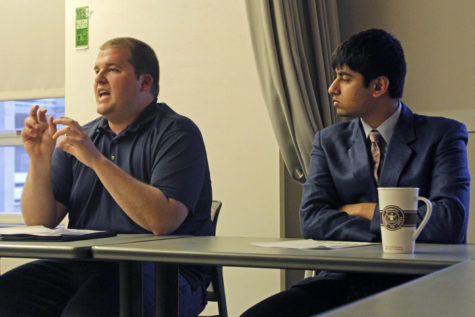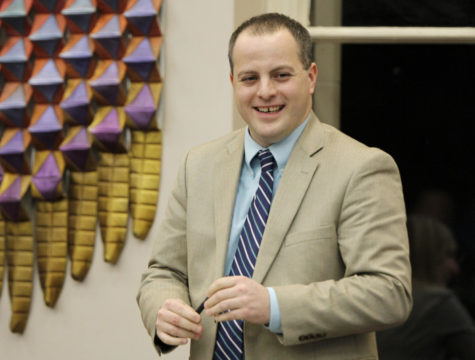Colposcope to help determine cases of sexual assault
October 21, 2002
Some things cannot be seen with the naked eye.
The Thielen Student Health Center and Mary Greeley Medical Center received funding on Oct. 16 to help with that problem.
The Government of the Student Body agreed to fund more than $20,000 for the purchase of a colposcope and colposcope adapters.
A colposcope is a medical instrument that allows health care providers to see tiny tears in the vaginal area. The adapters help focus on scratches, cuts or reddened areas.
“It is a big magnifying glass or something that can really magnify injuries,” said Heather Priess, coordinator of the Story County Sexual Assault Response Team.
The instrument works with the help of a bright light and is used to examine rape victims.
“There are typical injuries you see quite frequently,” said Sue Dekkers, a staff nurse at the student health center. “There can be little tears between the vaginal and anal openings. It looks like the skin has been pulled apart.
Dekkers said the colposcope gives nurses the ability to document these injuries.
“It’s a better way of trying to determine if sexual contact was a forced thing,” Priess said. “Just sperm doesn’t show whether or not it was forced. When you can see a lot of injuries, it shows sex was more likely forced.”
The student health center currently has two functioning colposcopes, but neither has the camera, monitor or printing adapters that help cases stand up in court.
Dekkers said without the camera and printer adapters, she has been forced to draw what she sees through the colposcope lens.
“I’m no artist,” she said. “I have a camera purchased by [the Department of Public Safety], which has been great for taking pictures of bruising.”
The camera can get close-up shots of bruises or reddened and scratched areas.
Dekkers said in addition to using the colposcope and camera, when a person comes in because of a sexual assault, she does an exam.
“My job is to document what happened,” Dekkers said.
She said student health will receive a digital camera, monitor and printer for their existing colposcopes.
“It really does make a lot of difference to use a colposcope and have pictures,” Priess said. “It’s more compelling for the jury to see that the person really was injured.”
At Wednesday’s GSB meeting, Megan Woodbeck, SART coordinator for Mary Greeley Medical Center, said the Mary Greeley Foundation offered to pay $6,000 in matching funds for the scope.
She said some rape injuries carry lifelong effects on the victim.
“We collect evidence as thoroughly as we can,” Priess said. “Colposcopes help us document evidence that otherwise might not be useful.”
Dekkers said the emergency room does not have a colposcope, but sees about two-thirds of Ames area rape victims, many from Iowa State.
Though the colposcope is primarily used to gather evidence in sexual assault cases, Dekkers said it also has other purposes.
She said a “routine colposcopy” is used for abnormal pap smears — tests that remove cells from the surface of the cervix — by letting the doctor look at the cervix and do biopsies if necessary. The doctor can dye the cells of the cervix to look for different reactions.
She said pap smears are something women should be doing every year because it is a great screening tool. The colposcope helps to see changes in the cervix.
“Depending on what’s affecting the cells, the coloring of the cells will change,” Dekkers said. “If there’s injury, the cells pick up the dye.”
She said a different dye is used in sexual assault cases than in routine pap smears.
“The hospital hasn’t had a need to have one there,” Dekkers said. “They haven’t had a need to do a colposcopy. This is an important thing for them.”









